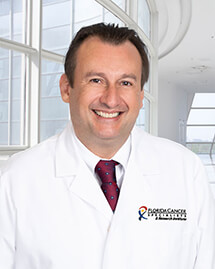Author(s): Pasi A. Jänne, M.D., Ph.D., Gregory J. Riely, M.D., Ph.D., Shirish M. Gadgeel, M.D., Rebecca S. Heist, M.D., M.P.H., Sai-Hong I. Ou, M.D., Ph.D., Jose M. Pacheco, M.D., Melissa L. Johnson, M.D., Joshua K. Sabari, M.D., Konstantinos Leventakos, M.D., Ph.D., Edwin Yau, M.D., Ph.D., Lyudmila Bazhenova, M.D., Marcelo V. Negrao, M.D., Nathan A. Pennell, M.D., Ph.D., Jun Zhang, M.D., Ph.D., Kenna Anderes, Ph.D., Hirak Der-Torossian, M.D., Thian Kheoh, Ph.D., Karen Velastegui, B.Sc., Xiaohong Yan, Ph.D., James G. Christensen, Ph.D., Richard C. Chao, M.D., and Alexander I. Spira, M.D., Ph.D.
BACKGROUND
Adagrasib, a KRAS
G12C inhibitor, irreversibly and selectively binds KRAS
G12C, locking it in its inactive state. Adagrasib showed clinical activity and had an acceptable adverse-event profile in the phase 1–1b part of the KRYSTAL-1 phase 1–2 study.
METHODS
In a registrational phase 2 cohort, we evaluated adagrasib (600 mg orally twice daily) in patients with
KRASG12C-mutated non–small-cell lung cancer (NSCLC) previously treated with platinum-based chemotherapy and anti–programmed death 1 or programmed death ligand 1 therapy. The primary end point was objective response assessed by blinded independent central review. Secondary end points included the duration of response, progression-free survival, overall survival, and safety.
RESULTS
As of October 15, 2021, a total of 116 patients with
KRASG12C-mutated NSCLC had been treated (median follow-up, 12.9 months); 98.3% had previously received both chemotherapy and immunotherapy. Of 112 patients with measurable disease at baseline, 48 (42.9%) had a confirmed objective response. The median duration of response was 8.5 months (95% confidence interval [CI], 6.2 to 13.8), and the median progression-free survival was 6.5 months (95% CI, 4.7 to 8.4). As of January 15, 2022 (median follow-up, 15.6 months), the median overall survival was 12.6 months (95% CI, 9.2 to 19.2). Among 33 patients with previously treated, stable central nervous system metastases, the intracranial confirmed objective response rate was 33.3% (95% CI, 18.0 to 51.8). Treatment-related adverse events occurred in 97.4% of the patients — grade 1 or 2 in 52.6% and grade 3 or higher in 44.8% (including two grade 5 events) — and resulted in drug discontinuation in 6.9% of patients.
CONCLUSIONS
In patients with previously treated
KRASG12C-mutated NSCLC, adagrasib showed clinical efficacy without new safety signals. (Funded by Mirati Therapeutics; ClinicalTrials.gov number,
NCT03785249. opens in new tab.)
Author Affiliations
From the Lowe Center for Thoracic Oncology, Dana–Farber Cancer Institute (P.A.J.), and Massachusetts General Hospital (R.S.H.) — both in Boston; the Thoracic Oncology Service, Division of Solid Tumor Oncology, Department of Medicine, Memorial Sloan Kettering Cancer Center, and Weill Cornell Medical College (G.J.R.), and Perlmutter Cancer Center, New York University Langone Health (J.K.S.), New York, and the Department of Medicine, Roswell Park Comprehensive Cancer Center, Buffalo (E.Y.) — all in New York; the Henry Ford Cancer Institute, Detroit (S.M.G.); the University of California Irvine School of Medicine, Chao Family Comprehensive Cancer Center, Orange (S.-H.I.O.), the University of California San Diego Moores Cancer Center, La Jolla (L.B.), and Mirati Therapeutics, San Diego (K.A., H.D.-T., T.K., K.V., X.Y., J.G.C., R.C.C.) — all in California; the Division of Medical Oncology, Department of Medicine, University of Colorado Anschutz Medical Campus, Aurora (J.M.P.); Sarah Cannon Research Institute at Tennessee Oncology, Nashville (M.L.J.); the Department of Oncology, Mayo Clinic, Rochester, MN (K.L.); the University of Texas M.D. Anderson Cancer Center, Houston (M.V.N.) and US Oncology Research, The Woodlands (A.I.S.) — both in Texas; Cleveland Clinic Taussig Cancer Institute, Cleveland (N.A.P.); the Division of Medical Oncology, Department of Internal Medicine, and the Department of Cancer Biology, University of Kansas Medical Center, Kansas City (J.Z.); and Virginia Cancer Specialists and NEXT Oncology Virginia — both in Fairfax (A.I.S.).
